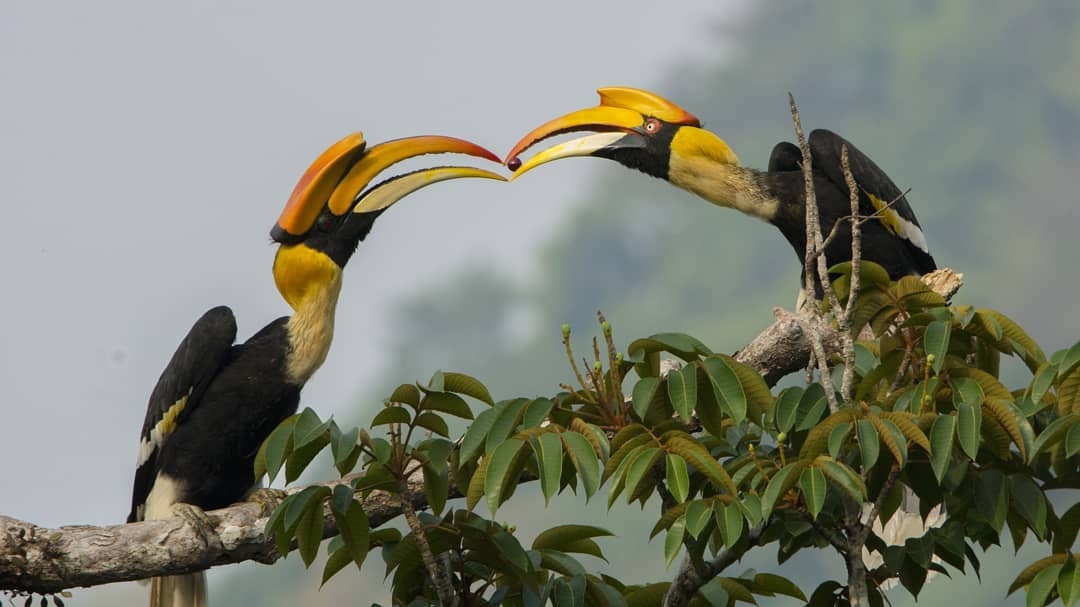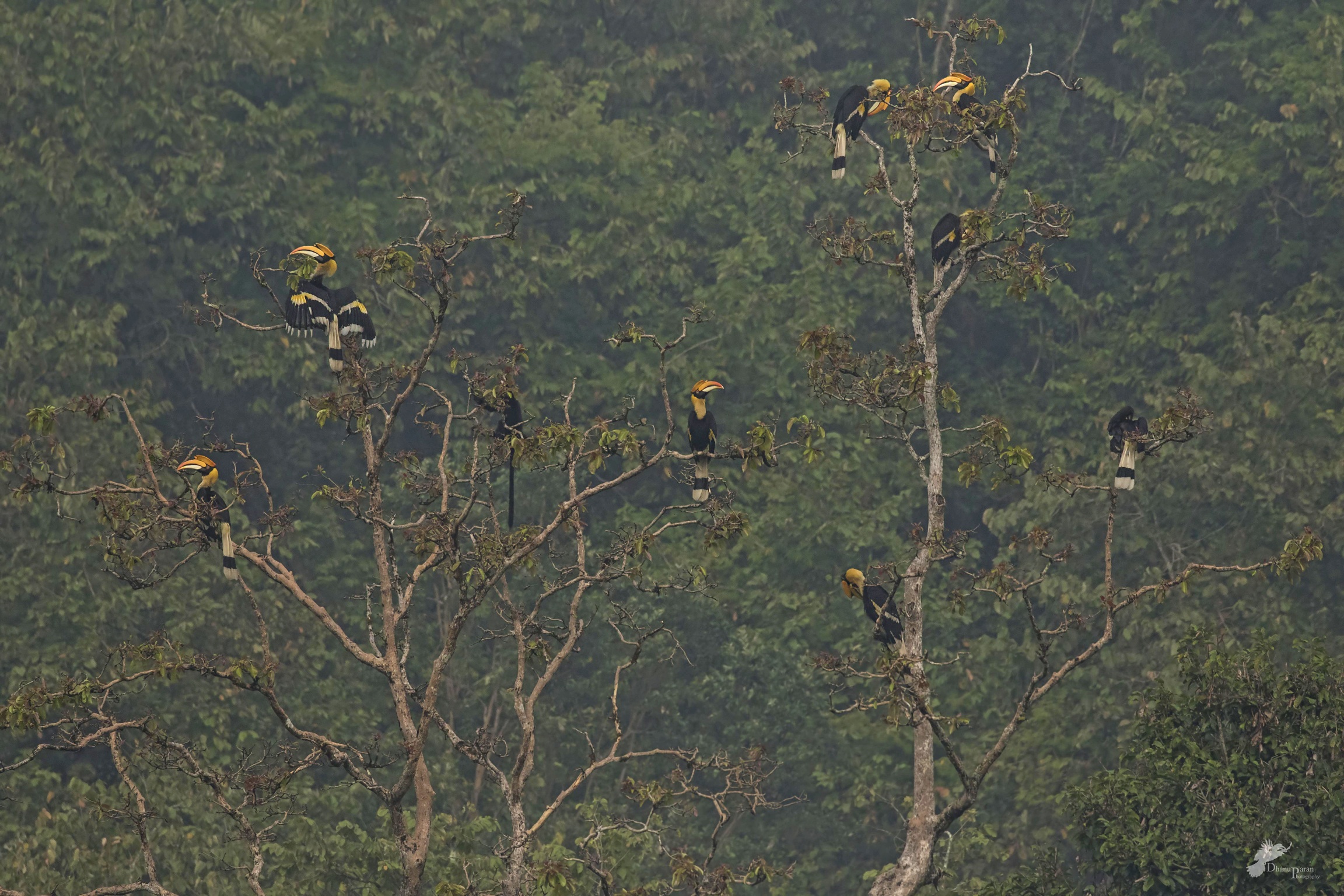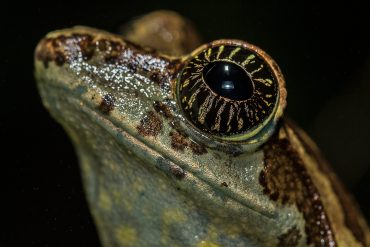“So, you’re travelling 600 km in the hope of seeing a bird you are not sure of actually seeing?”, asked a friend as I was getting ready to participate in the birding tour organised by the Pollachi-based travel firm, The Papyrus Itineraries, in the rich forest tracts of Anamalai Hills.
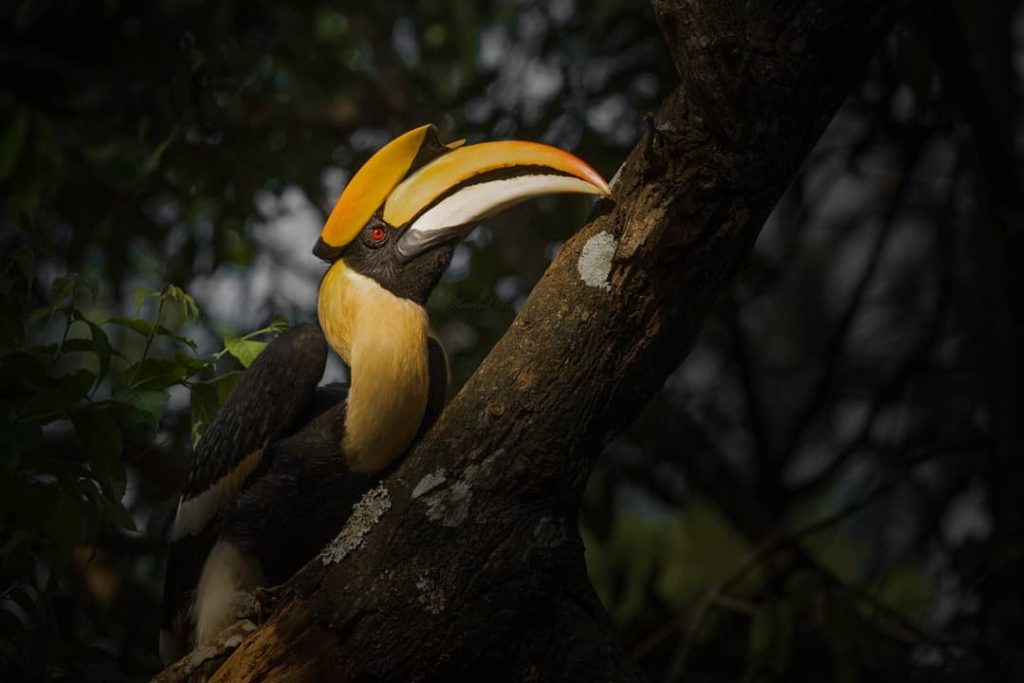
I was hoping to catch a glimpse of the Great Pied Hornbill – a high-flying bird with a yellow casque (a hollow, helmet-like structure) that is large enough to be spotted from a distance. But, from my past experiences, I have learnt that birds are notoriously moody. And as any unlucky amateur birder would tell you, the further you travel to see a bird, the higher the chance that your pretty, feathered friend would stand you up.
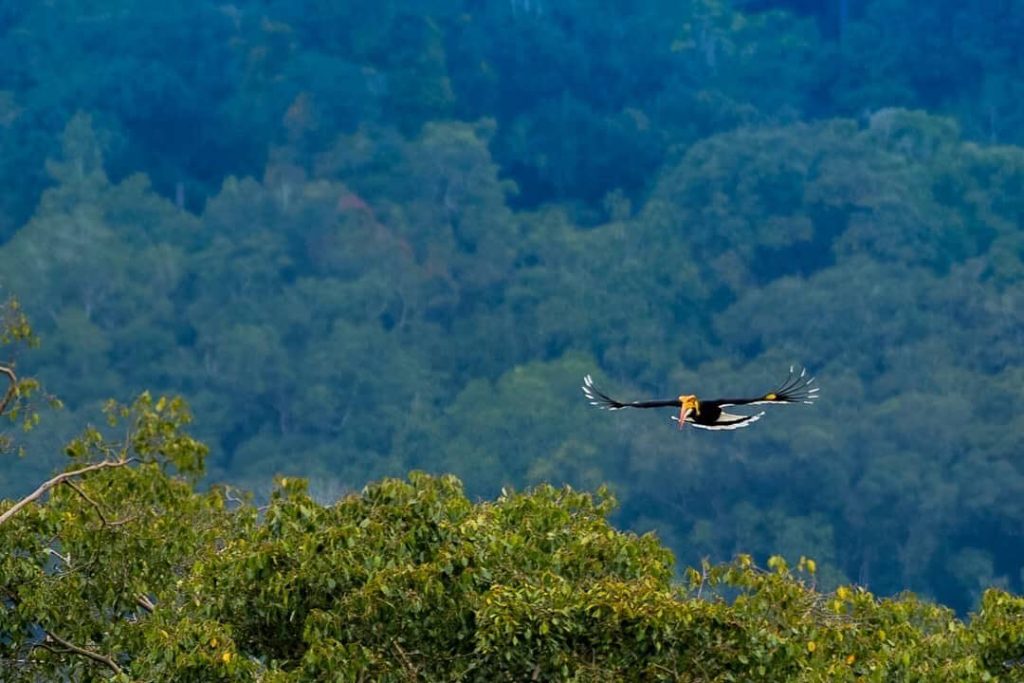
It’s a balmy September evening, and it is courtship season for the Great Hornbill, a bird I’m fascinated with, for its behavioural traits. We started the walk among coffee and tea gardens, interspersed with patches of rainforest. Between September and December, the maesopsis eminii berry ripens and the hornbills come in droves to feast on their favourite fruit.
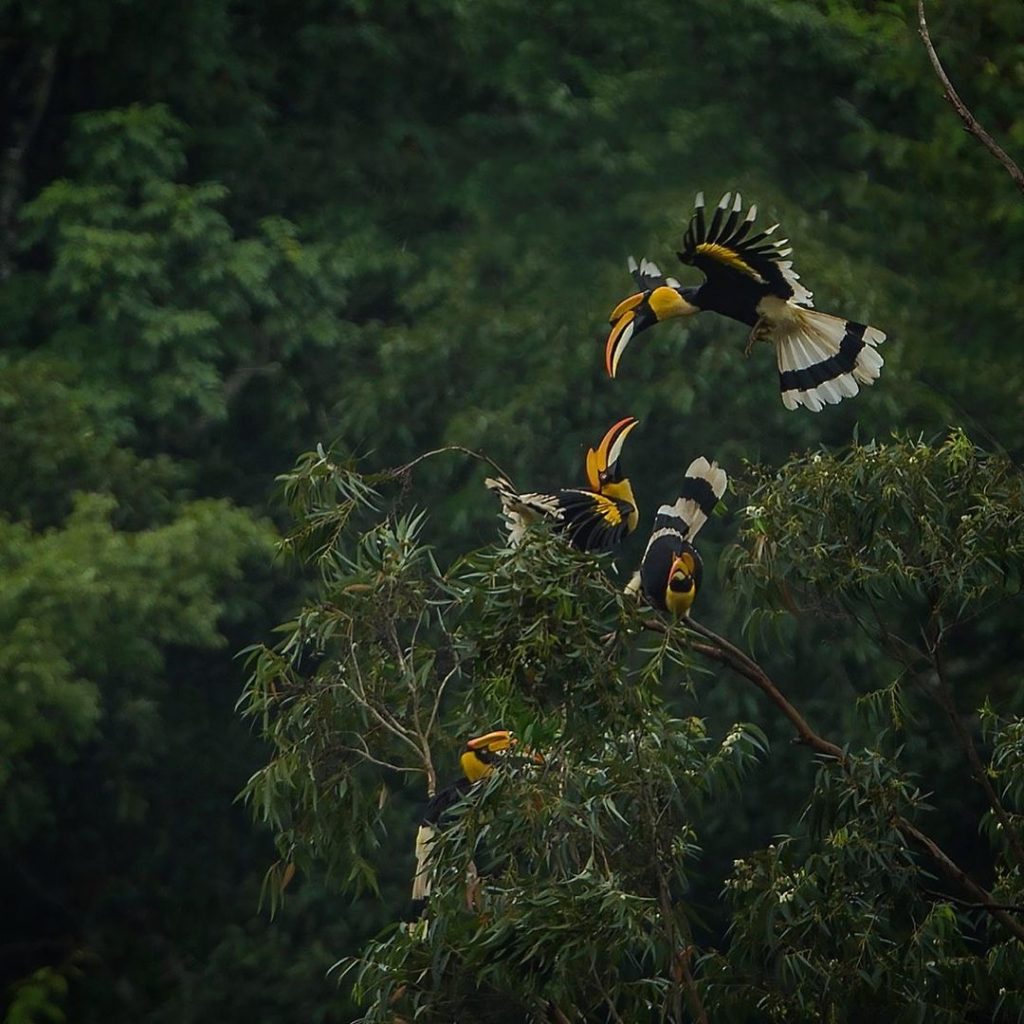
There are sounds of life all around us: A group of yellow-billed babblers noisily fend off a threat. Woodpeckers focus on their headbanging. A pair of bulbuls chirp on a branch. The cicadas reach out to comrades in other trees with their classic symphony. All of a sudden, the orchestra around us fades into the background.

There’s a whoooosh in the air. And a flash of black and yellow. ‘Hornbill’, whispered our Naturalist, and we automatically lower our voices. The rhythmic flapping of the large bird’s wings mutes everything, even the sound of your own breath. For a moment, you’re transported to a parallel, a pre-human world ruled by these beautiful creatures.
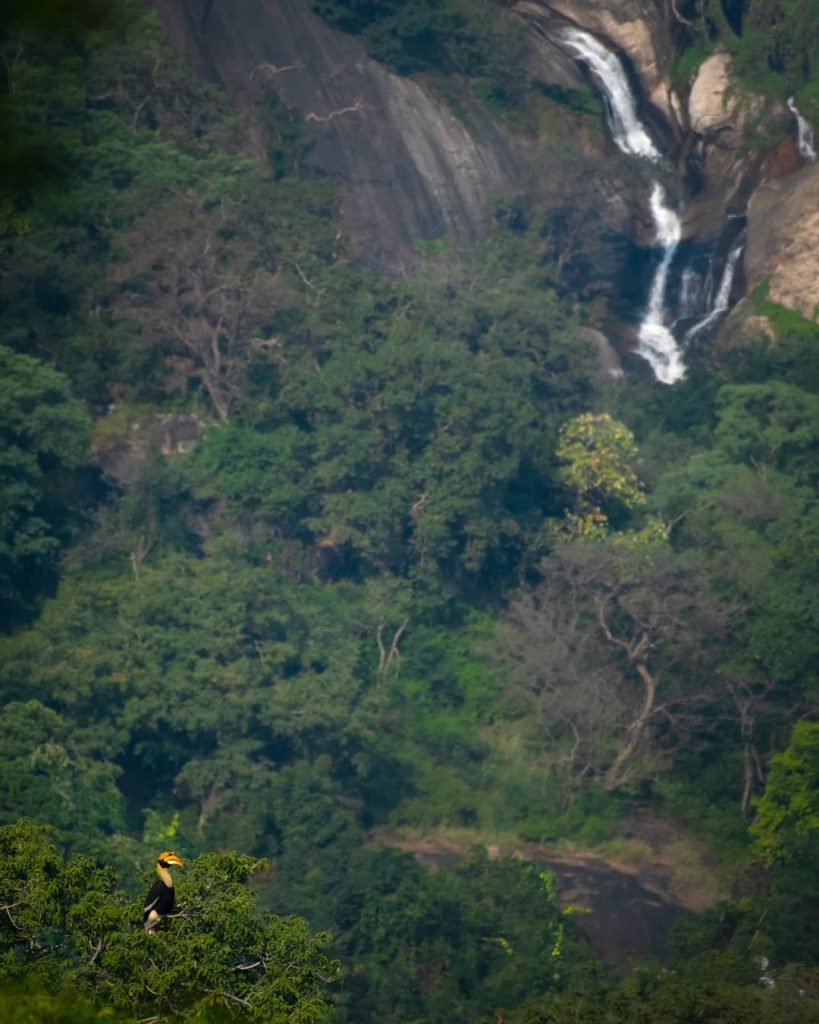
The Malayalam name for the Great Pied Hornbill seems most appropriate at this point – “Malamuzhakki Vezhambal”, the one whose sound reverberates through the mountains. In myth, art and popular songs in Kerala, the Great Hornbill is pictured looking up to the skies in the middle of a hot summer, wailing for the first drops of rain to fall down its throat.
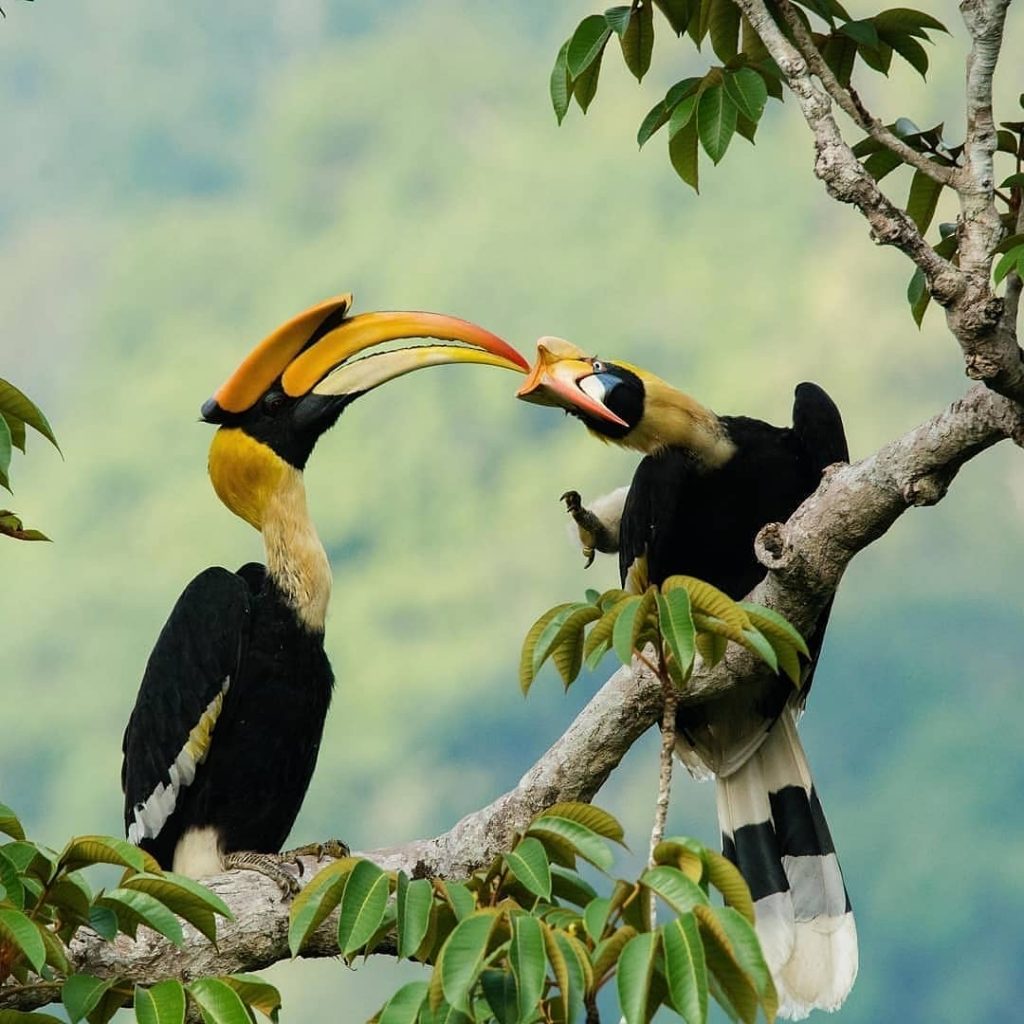
To modern environmentalists, though, these great birds are the Farmers of the Forest, a reference to their role in seed dispersal as they fly large distances and spit out the seeds of the fruits they eat.
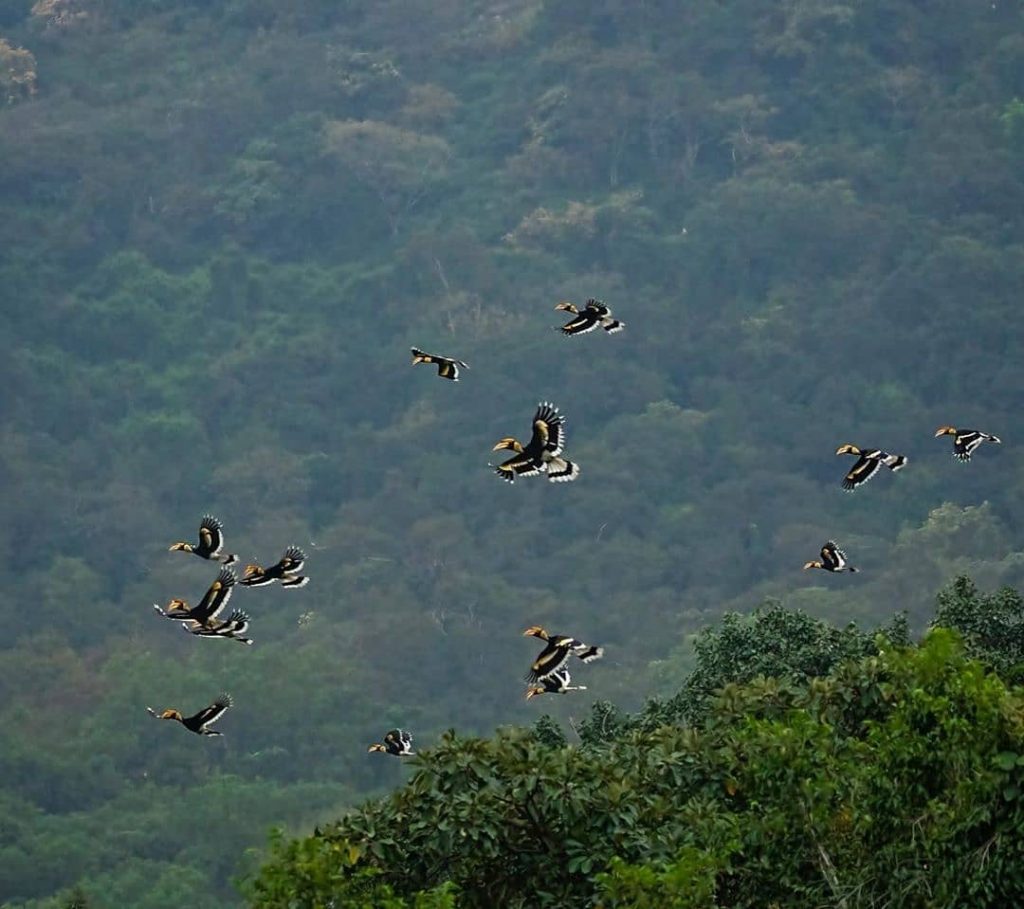
As we walk further down a steep path, more hornbills come into view. From our vantage point, we watch these majestic creatures in silence as they hop sideways through branches. They move with awkward, gentle grace. Giving them company on the maesopsis eminii tree are Mountain Imperial Pigeons who, too, relish the sweet and sour purple fruit of the tree.

The Maesopsis tree is not native to the region. It was first planted by the British as a shade-giver for coffee plants. The hornbills eat as some humans eat peanuts. They throw the fruit up in the air and then toss it into their throat with a quick jerk of the head.
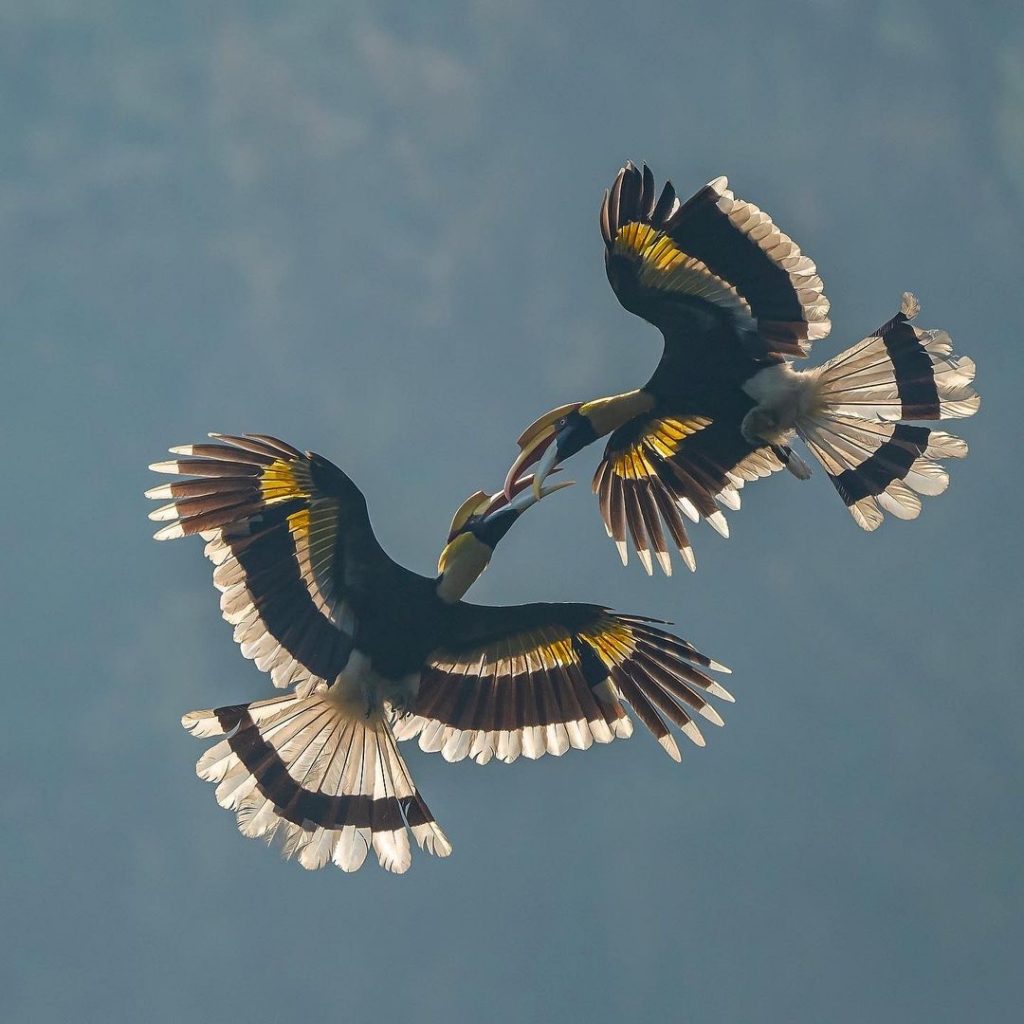
At the beginning of the mating season, the male hornbills put on an aerial show of beauty to impress the female. Two males engage in a head-to-head casque-butting in the air for the benefit of female spectators.
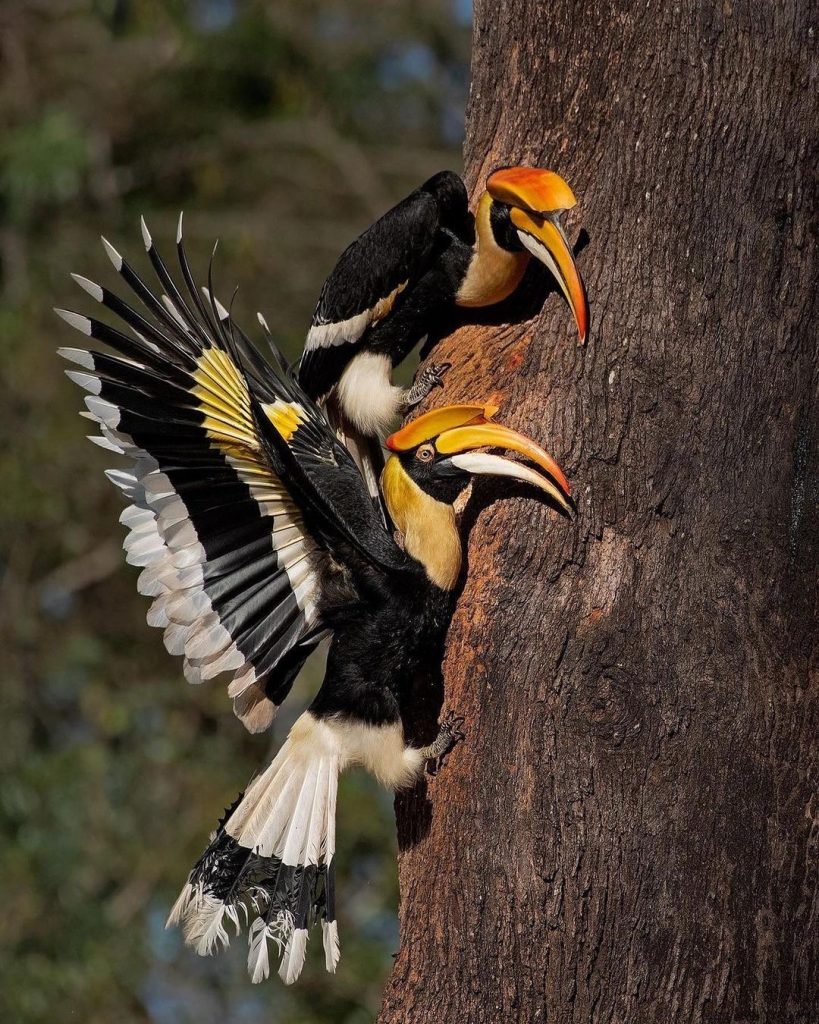
Hornbills are said to mate for life. A few months on, it would be the nesting season for these hornbills. The female is “imprisoned” in its nest, the natural cavity of a tall tree. Both mates seal the entrance of the nest using dung and pellets of mud. The female sheds her feathers and the male brings in food several times a day until the egg hatches.
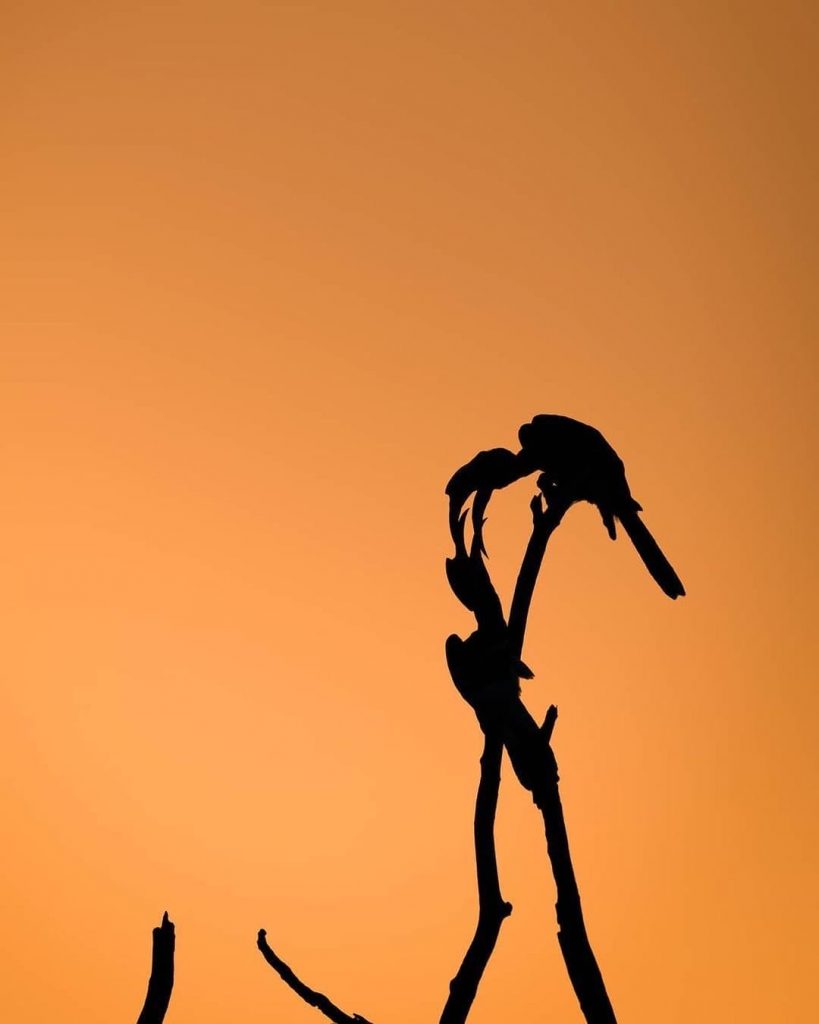
As we watch and listen to the grunts of the giant birds against the splendid early winter sky, it’s hard not to be inspired by these precious creatures who have found ways to survive even as we encroach into and destroy their spaces.
Perhaps, it’s worth taking a 600 km ride to remind yourself that despite what you watch on the television news, it’s still a very beautiful world out there.

